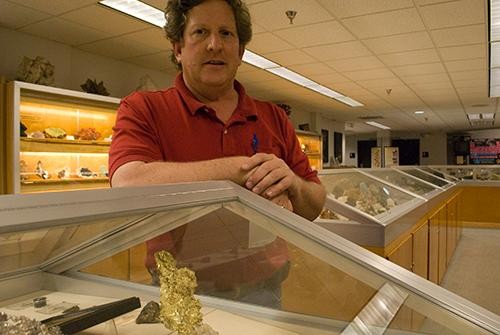The UA Mineral Museum will sell 700 of their pieces at the Tucson Gem and Mineral Show to match an endowment to make the museum more self-sufficient.
The UA Department of Geosciences pays the day-to-day expenses of the museum. However, it does not pay the salary of the museum’s one employee.
Freeport-McMoRan Copper & Gold Inc. established an $750,000 endowment, which covered the salary of Mark Candee, the museum’s assistant curator and collections manager, last year.
Candee said his position has a history of turnover. The money raised from selling repeat pieces from the museums 19,000-piece collection will ensure the curator and collections manager position at the museum. Selling duplicates will not harm the collection, according to Marcus Origlieri, founder of Mineral Zone.
Without a curator, the collection ends up being destroyed, stolen or sold, Candee said.
A challenge was put forth with the endowment of matching the amount in two years, according to Candee.
Candee said the entire sale is going through Mineral Zone. Origlieri made the “”best bid”” for the contract.
Origlieri is selling the minerals on consignment, keeping 10 percent of twhe proceeds while the rest of the funds go directly to the Mineral Museum.
Pieces being sold include amethyst, gold, silver, crystal and more.
Origlieri said they would “”keep the best one”” and sell the second or third specimen.
Candee said everything in the museum has been donated, either directly or by monetary donations that lead to mineral purchases.
Candee said museum funding is “”well over $1 million right now,”” and growing closer to meeting the $1.5 million goal to match its endowment.
The Mineral Museum currently is showcasing “”Dangerous Beauties: Minerals of Hindu Kush.””
The new exhibit opened on Feb. 4 and will continue through June.
The minerals’ origins range from Afghanistan to northern Pakistan. They remain unpolished and uncut. The collection is “”absolutely natural,”” Candee said.
The first lone glass case in Flandrau Science Center and Planetarium houses the biggest crystal found in Pakistan. According to Candee, the crystal was “”dug up”” only three weeks ago.
The collection also houses lithium and other minerals that make it “”impossible to have a 4G cell phone without,”” Candee said.









